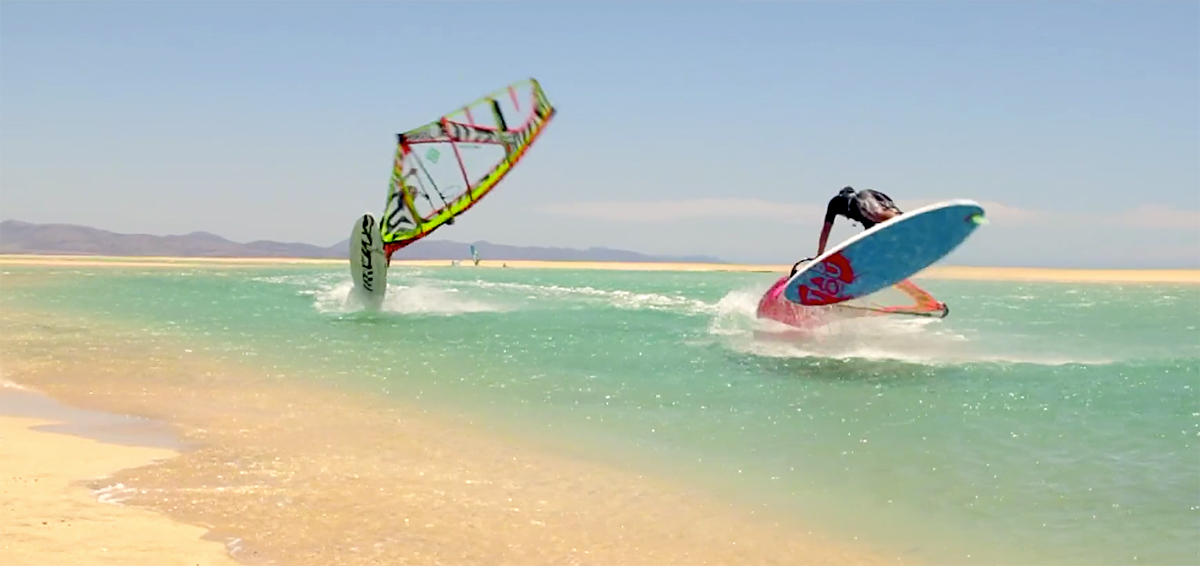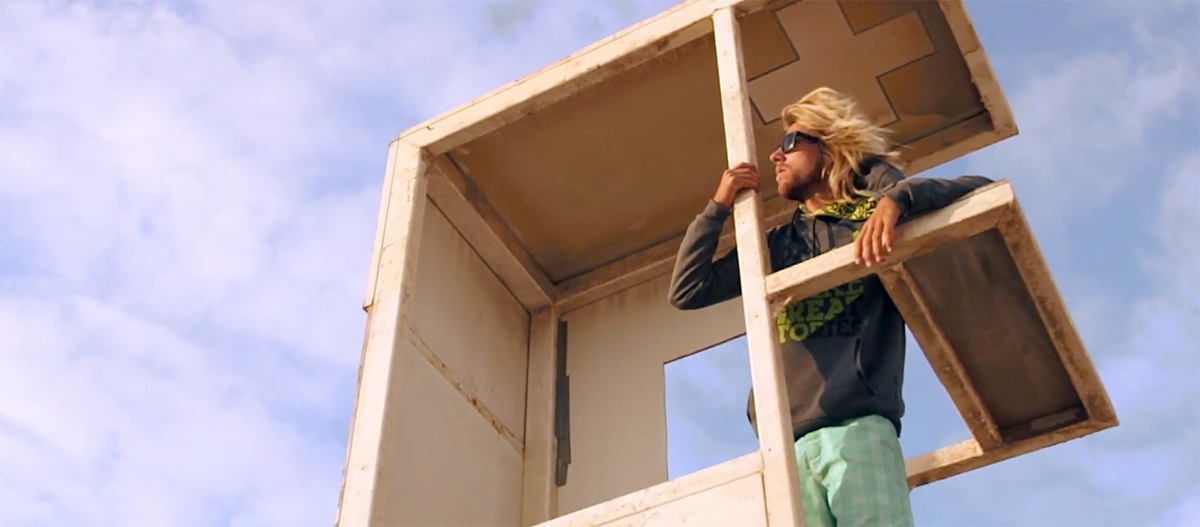Loick Spicher is an incredibly sensitive freestyle windsurfer. He always tries to work with the help of the wind and waves instead of pushing hard with all his muscles and physical strength. The 24 years spent several months in Fuerteventura in 2016 and has now released the film “Riscoloco”. The clip shows great action from him and his fellow countryman Jeremy Plüss, who spent many weeks in Fuerteventura last summer, too. We had a chat with the friendly globetrotter, who didn’t spend much time in Switzerland during the past 5 years.
Filmed by: Jazzy Zwerus, Jeremy Plüss & Valentin Böckler
Loick Spicher presents his freestyle windsurfing skills in the film “Riscoloco”
Interview with Loick Spicher
CONTINENTSEVEN: Great video Loick! Where did you film all the action and when?
LOICK SPICHER: Thanks! Everything was filmed in Fuerteventura’s south last summer.
CONTINENTSEVEN: How was your winter so far?
LOICK SPICHER: It has been a great winter! I went to Brazil for two months and I am currently training in Cape Town, South Africa.
CONTINENTSEVEN: Motivated for the new season. It looked like you improved your skills a lot during the past 10 months.
LOICK SPICHER: Yes, I focused more on my own windsurfing and this surely helped me to progress more.
CONTINENTSEVEN: You got more stable in your heats and it looks like you have much more airtime. Do you think the same?
LOICK SPICHER: First of all I would say, that thanks to all the training from the last years I was able to sail like I did. It’s not really the achievement I was aiming for. My goals were set higher but nonetheless I am still happy to have brought that performance in the end of last year. I am training a lot and hope to perform even better this year.
Secondly I think a factor that really helped me as well was the new RRD gear. Over the last year it improved in many ways and I feel very comfortable sailing on it. It’s light, it has got a lot of control, feels neutral in the ducks and very powerful in all the moves. I am sure that it’s one of the best equipments out there at the moment.

Loick Spicher and Swiss colleague Jeremy Pluess play together in the water
CONTINENTSEVEN: Freestyle is your favorite discipline. Did you try some wave riding, too?
LOICK SPICHER: I always loved freestyle windsurfing and entirely focused on it. It’s the first year now that I am using more and more a wave board here in Cape Town. Mainly to improve my jumping skills but also ride a few waves as it’s really fun as well.
CONTINENTSEVEN: What are the moves for 2017?
LOICK SPICHER: Double Air moves are the future.

Loick Spicher is checking the wind at Risco del Paso, Fuerteventura
CONTINENTSEVEN: What are your plans for 2017?
LOICK SPICHER: Competing on the PWA and EFPT tour, travel and improve my windsurfing skills. I am also considering to start online economics studies this autumn and combine it with my windsurfing career.
CONTINENTSEVEN: What’s the basic level a windsurfer should have when starting with freestyle windsurfing and what’s the perfect setup for the beginning (board size, fin length, sail sizes)?
LOICK SPICHER: I really bet a lot on light wind freestyle windsurfing to develop all the main technical movement of how to handle your sail and get the feeling for the wind. So you basically can practice your freestyle anytime just in a few knots, which keep you going and help learning how to sail back wind, spin around etc.
As soon you are able to water start and plane I would say it depends a lot on your bodyweight and size which gear you want to use. I would recommend board sizes between 90 and 110 liters according to your weight. The fin length should be in between 16cm and 20cm and the best sail size to learn the best technique would be between 4.4m and 5.2m depending on your weight and the actual wind.
I would recommend to any people who want to improve their basic freestyle skills to try to go to places where the wind ranges between 17 and 23 knots for maximal improvement.
Thanks a lot for the interview and I hope to see many more of you out there on the water soon improving the basic backwind skills and basic spins!
©continentseven.com 2017
